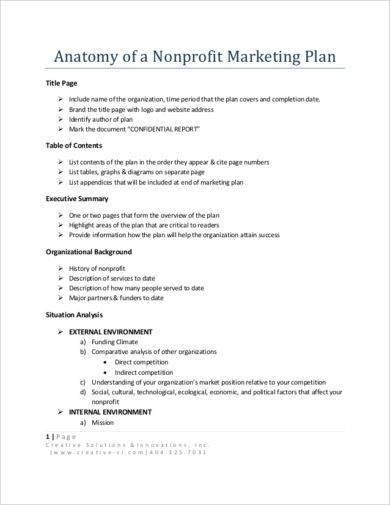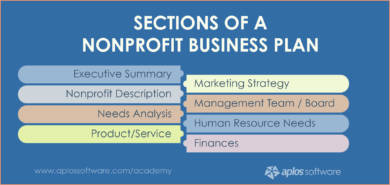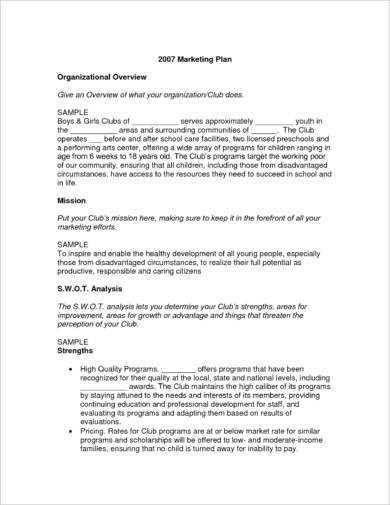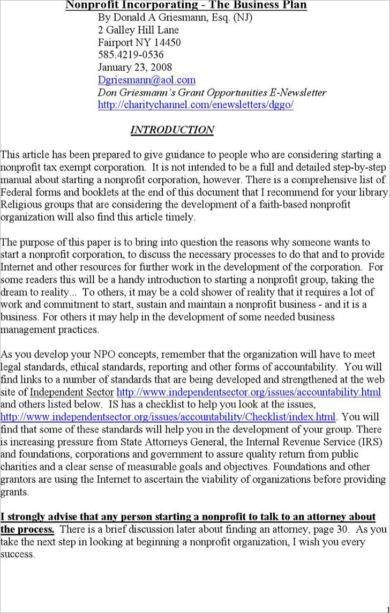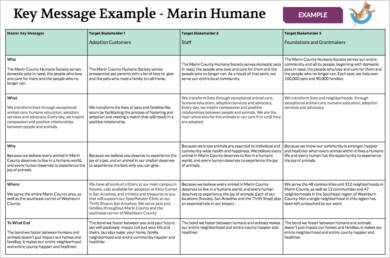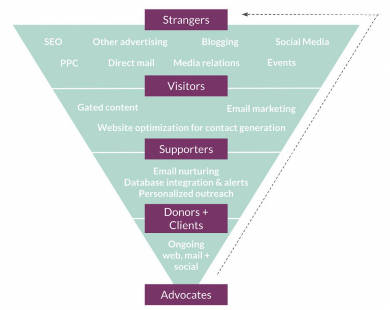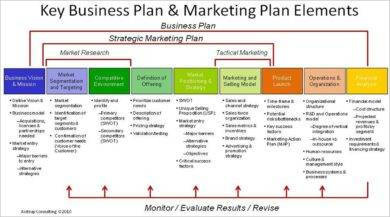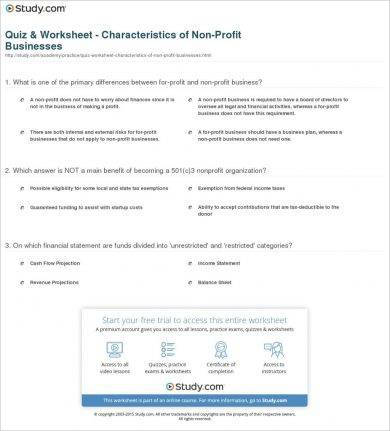9+ Nonprofit Fundraising Plan Examples to Download
Nonprofit organizations are non-business entities who are operating for a particular social benefit. They may operate for religious (such as The Salvation Army and the World Vision International), scientific (such as the American Association for the Advancement of Science and UNESCO), research and educational settings (such as the Corazones Para Peru and the 4th World Love). You may also see event marketing plan examples.
Their efforts, time, and resources serve as their investment to continue the cause that they have initiated and to keep helping the people who have come to rely on them.
However, these organizations who exist for a good cause are not as well-funded as business sectors and other private organizations, which doesn’t come as a surprise since they’re not really in it for the money. But this also means that they rely mostly on donors and stakeholders who provide them with funds without expecting any monetary profit in return. You may also see strategic marketing plan examples.
Unfortunately, there aren’t always a lot of people who are willing to give their hard-earned money without a return on investment.
This brings us to every nonprofit organization’s dilemma: funds.
Nonprofit Marketing Plan Example

Anatomy of a Nonprofit Marketing Plan
Sections of a Nonprofit Business Marketing Plan
Nonprofit marketing is an attempt to solve this problem by seeking to communicate to a targeted audience the values of an organization and to find people who are willing to support the cause, through volunteering or financial support. You may also see marketing strategy business plan examples.
Basically, it is the combined efforts of an entire organization to spread the word about their existence and the reason for it, hoping that some people may be convinced that it is a purpose worth supporting.
A nonprofit marketing plan is a choreographed strategy that will guide the organization on what to do to achieve their marketing goals. It gives everyone the chance to work toward the same goal using the same set of steps, making the effort more unified, thus amplifying their chance to achieve success.
Here are the things that an organization must identify in their marketing plan:
1. A Defined Goal
Nonprofit organizations have a vision, they have a purpose that drives them forward. This vision, this dream, is what fuels the very reason for the organization’s identity. Every activity that the team creates is a step closer to realizing that vision. You may also see marketing strategy plan examples.
Unfortunately, visions are not easy to achieve. They are a constant work-in-progress especially since these nonprofit organizations are targeting such a wide audience to help (aka the whole world). Setting smaller goals that will lead up to it is the best approach that these organizations can take.
Here are the four most common nonprofit marketing goals:
- New donor or new member
- Community engagement
- Raising awareness
- Becoming a thought leader
Aside from creating marketing plans, nonprofit organizations should also have well-defined goals. This will keep them from getting lost along the way. For small organizations, a priority goal per quarter is already a smart move. It’s important that they don’t overwork themselves, especially if they only have a few members.
Taking it one small step at a time can already bring impressive results for small organizations. For bigger ones, on the other hand, two goals at a time can be handled since there will be more members who will divide the tasks between themselves. You may also see business marketing plan examples.
One mistake that organizations often make is being too ambitious. It’s never wrong to aim high, of course. But there are always limitations. If teams set their eyes on impossible goals, they will rarely accomplish anything. They’d all be planning, and trying, but never achieve. What would that make the organization? To ensure success, it’s important that we assess our strengths and weaknesses before we start creating goals. You may also see affiliate marketing plan examples.
It would also be helpful to apply the SMART method for this. It stands for:
SPECIFIC. As we’ve already discussed, the organization should have one defined goal that they will work for.
MEASURABLE. It’s important that there are measurements that the team can use to calculate their improvements along the way.
ACHIEVABLE. We’ve already talked about the importance of setting goals that are actually attainable. Take into consideration your resources, money, expertise, and people, and let them help you determine what you can and cannot do.
RELEVANT. An organization’s goals should lead them further to success.
TIME-BASED. Every goal should always have a deadline. Otherwise, the team may not be motivated by any constraint to be responsible with their goals.
2007 Marketing Plan Example
Nonprofit Business Plan Example
2. A Target Audience
The world is huge, and to say that your marketing target is all of it is wishful thinking. Although it’s not impossible, it’s not quickly attainable. The best thing you can do, especially for small, startup organizations, is to target a small part of the world first, before trying to conquer it all. You may also see product marketing plan examples.
Choosing people you can market to in the hopes of encouraging a few of them to support you is one of the heaviest burdens that every organization faces. Unfortunately, it is also one of the most necessary. You may be facing the same struggle in your organization. You may also see integrated marketing plan examples.
The first thing you can do to determine the most effective audience for you is to try and recognize the crowd you are trying to help. Is your organization dedicated to children? Orphans, perhaps? Abused wives? Maybe you’re passionate toward academic research, or to help smart children who can’t afford to go to school. You may also see law firm marketing plan examples.
Once you have identified the people for whom all the help is for, try thinking who might be interested in helping them. Married couples always have a soft spot for children and orphans, fellow women may be willing to help victims of domestic abuse, and businessmen and professionals may want these poor kids to have a chance at a good education. You may also see apartment marketing plan examples.
The point is to look for people who may sympathize with the cases you are trying to help and the vision you are attempting to realize. By targeting them, by focusing your efforts toward convincing these groups, you have a bigger chance of getting a more positive response without having too much of your efforts and resources being wasted, unlike simply marketing to anyone. You may also see marketing strategies for small businesses.
3. A Brand Message
Every marketing attempt needs to have a message to deliver to its audience. This can be difficult since the message must be compelling enough to encourage supporters and donors, but brief so that people will not get tired of reading the whole thing. It should also be a perfect summary of what you do as an organization. You may also see restaurant marketing plan examples.
Creating a marketing message is a chance for the team to be creative. They can brainstorm novel ideas on how to express their message through a fun and riveting medium. It’s a chance for the artists in the team to take on the spotlight and bring out their best for the sake of the whole organization’s marketing attempts. You may also like how to write a marketing plan for a business.
Keeping an organization is already hard work. Imagine the difficulties that will come along with helping it grow. By creating a strategic nonprofit marketing plan, it will make the whole endeavor less overwhelming and more successful.
Key Message for Non-Profit Marketing Plans Example
Tactical Selection for Nonprofit Organizations
Parts of a Nonprofit Organization’s Marketing Plan
1. The Executive Summary
This part of the marketing plan is usually the last thing that you should write, but the first section of the finished plan. It’s because an executive summary tries to grasp the whole content of the marketing plan (thus, a summary) which will be impossible to make if you haven’t actually written the plan.
It’s a lot like an elevator pitch. It’s short enough that the novelty of it hasn’t worn off by the time that it’s finished, but enticing enough that you just can’t get it out of your head. These are the feelings that an executive summary wants to embed into its readers, which are usually donors and stakeholders.
This is mostly kept brief, yet concise, to keep its readers from falling asleep in the middle of the babbling. At the most, an executive summary shouldn’t take more than ten seconds when read out loud. When it does, it’s a good sign that it needs to be revised. You may also see personal marketing plan examples.
2. The Challenge
Of course, you need to put a little information in your marketing plan that can put your name in a good light. You should include a short (as usual) discussion of your products, or the services that you provide to people, and those that you are yet to produce to show your audience that you’re actually doing something. You should also include better goals that are measurable and achievable.
3. Situation Analysis
You should take a look inside your own organization and your stakeholders, and the current issues that you are facing in these aspects.
Organizational Analysis
- Long-term and short-term organization objectives
- Your organization’s focus
- Your organization’s culture
- Your strengths
- Your weaknesses
- The wideness of your organization’s sphere of influence
You may also see digital marketing plan examples.
Stakeholder Analysis
- Identify the potential number of stakeholders that may be directly related to your organization.
- Recognize the statistics of your stakeholders, such as their age, social class, and gender.
- Recognize your assets that haven proven themselves useful to your stakeholders.
Environmental Analysis
- Are there any governance issues affecting your organization?
- Is there a political context involved?
- What is your organization’s economic environment?
- What is your organization’s social and cultural environment?
- What are your organization’s technological needs?
- Are you making use of media to promote your organization?
You may also like real estate marketing plan examples.
SWOT Analysis
- What makes your organization unique?
- What are the setbacks that come along with this uniqueness?
- What are the opportunities that your organization can take advantage of?
- What are the elements that may prove themselves to be harmful to the survival of your organization?
Assessing the internal and external qualities that make up your whole team is important to help you recognize where your deficiencies lie, and what your strengths can do to make up for them. You may also check out marketing project plan examples.
4. Target Market Audience
We have already discussed this part earlier.
5. Short and Long-Term Projections.
Your simple marketing plan cannot be considered thorough if it won’t include your organization’s visions of what your future is going to be. It should include any adjustments that you predict you’re going to make in the future. It should also include your budge for any future expenses, and your anticipated revenues.
More tips in creating a market plan:
Since you are a nonprofit organization composed of a diverse and talented bunch of members, it’s never a bad idea to take their opinions and suggestions into the making of your marketing plan. You never know which one of them has the idea that can lead your organization to a major breakthrough. Plus, it can make them feel more involved and not just unpaid, kindhearted volunteers. You might be interested in real estate agent marketing plan examples.
Also, your marketing plan should harmonize with your organization’s mission, vision, and other core values. Otherwise, these two things will just contradict each other. That will cast a confusing image for your organization that will not help you earn more donors. You may also like advertising plan examples.
Don’t be hesitant to use graphics and illustrations in your marketing plan if you need them to make your point. But limits these illustrations to charts, graphs, and tables. You wouldn’t want your marketing plan to look like a child’s book of fairy tales. It has to remain professional yet comprehensive. You may also see email marketing plan examples.
Nonprofit Marketing Strategy Plan Pattern
Key Business and Marketing Plan Elements
Characteristics of Nonprofit Businesses
Creating a marketing plan for your nonprofit organization is only half the job. The real challenge will lie in the implementation of it. However, if you have a clear plan that will help you reach your professional goal, it will make you feel as if you’re closer to achieving it than you were before. That’s because you are.



